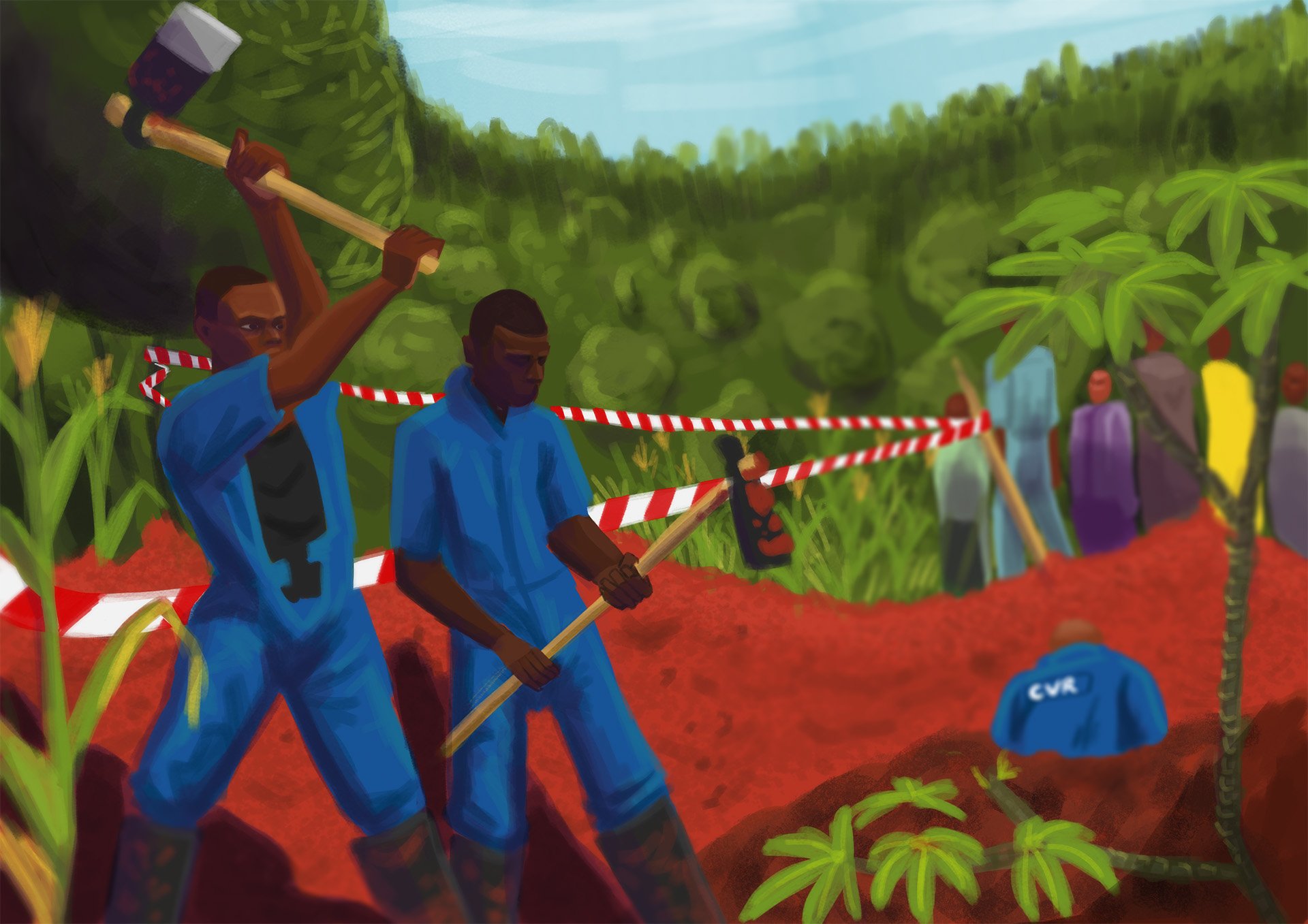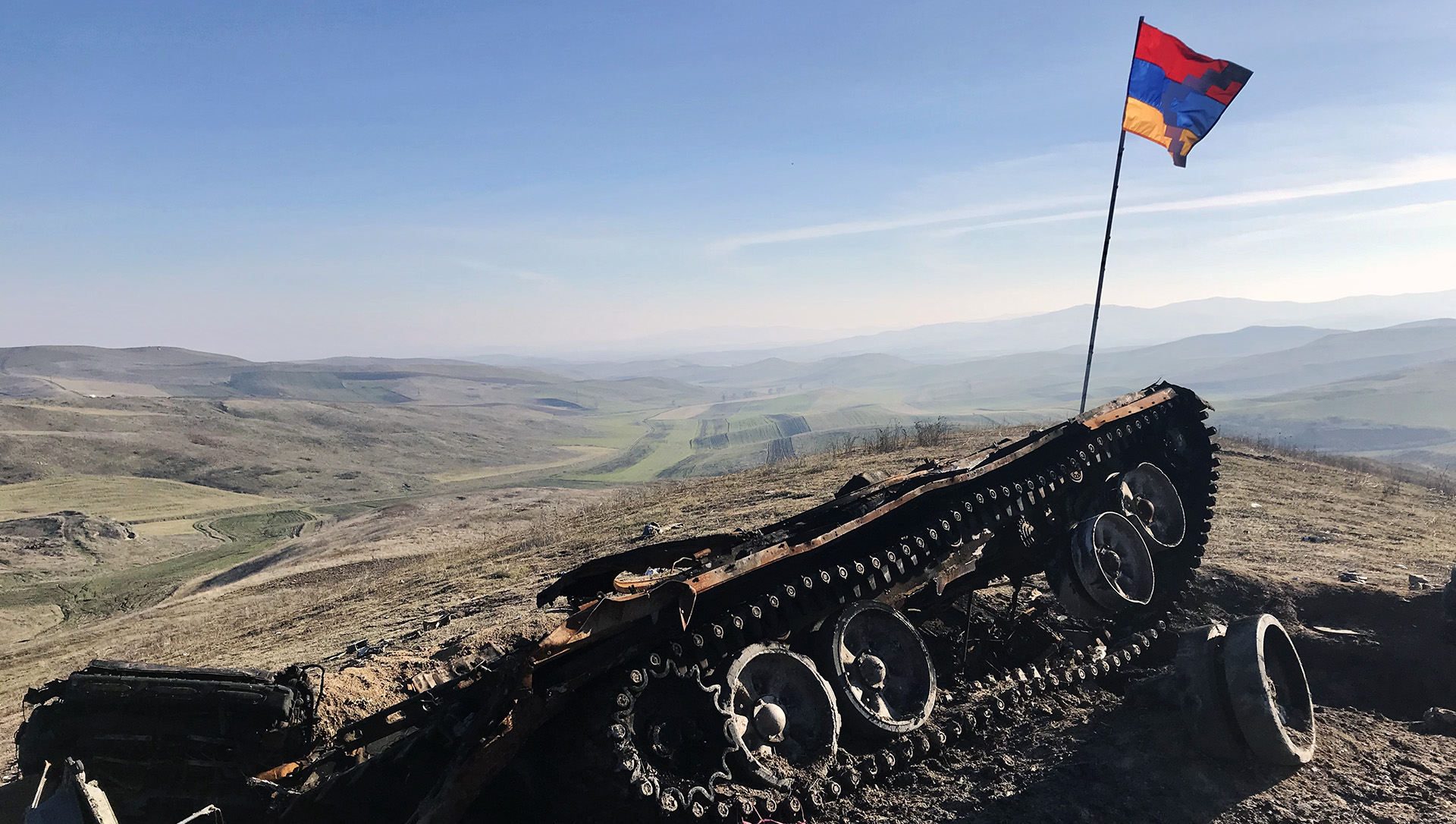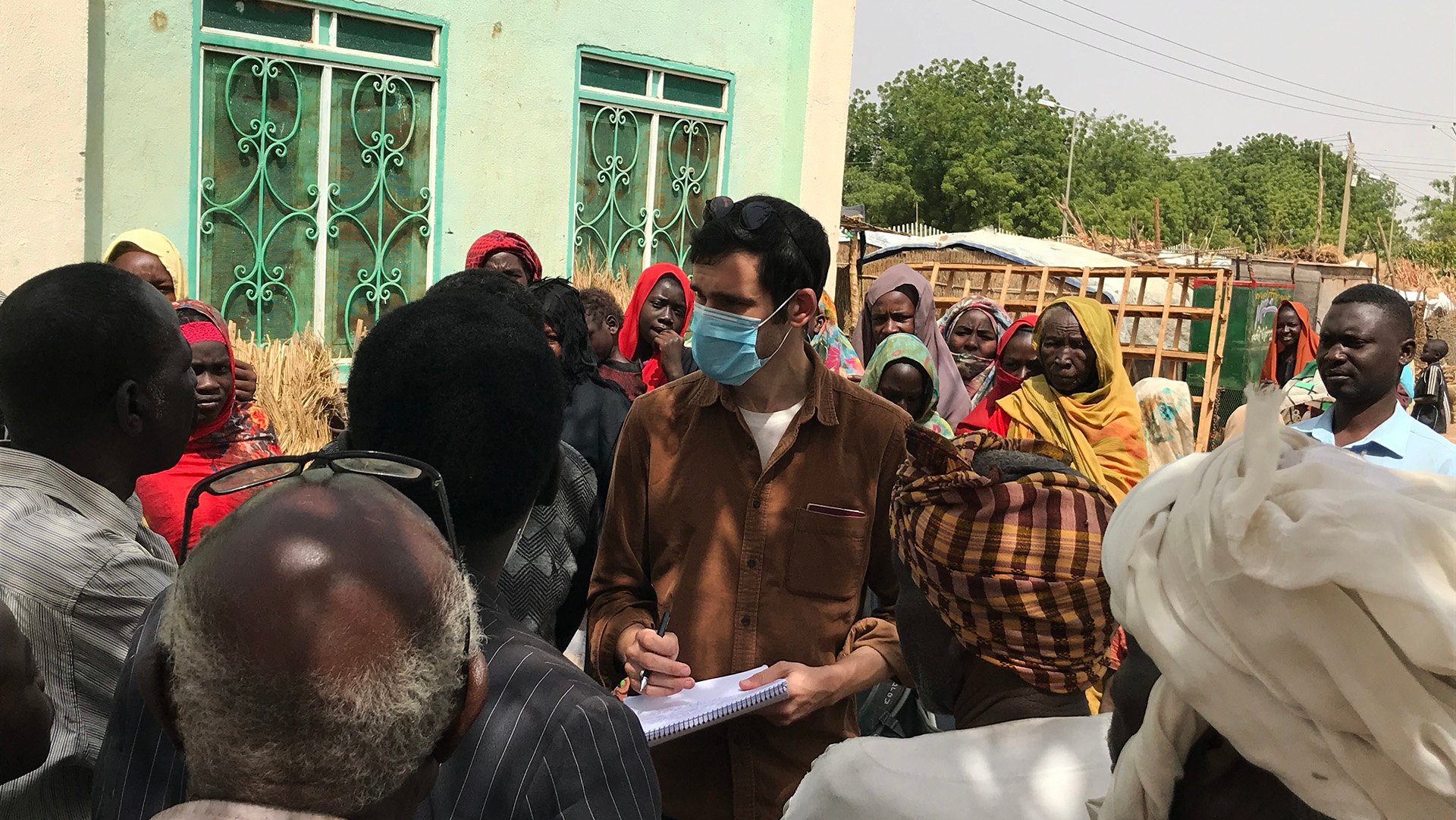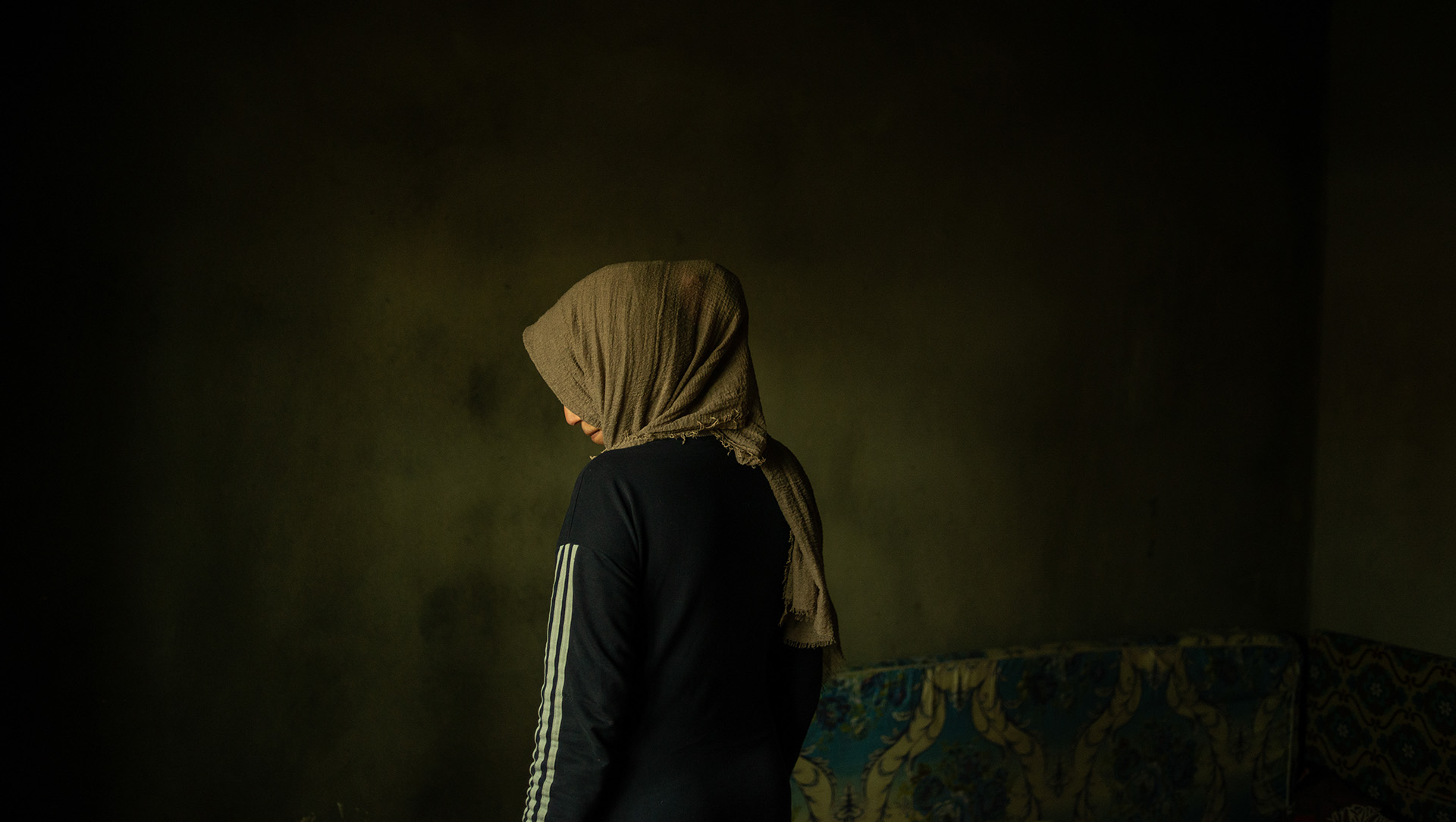Beyond the bang-bang: Reporting from the front lines of peace
Dealing with the bang-bang and numbed to the carnage, there is a tendency in our reporting and others’ to accept conflict and the suffering it creates as somehow inevitable.
But it isn’t. Which is why we’ve launched this series, reporting from the front lines of peace. The focus of our coverage is on how atrocities can be prevented, how societies can be made more resilient, and how peace can be sustainably built.
In short, we’re looking at the flipside of humanitarian disaster: attempts at healing and redemption with a focus on the “triple nexus”: the fusion of peace work, development, and humanitarianism.
Below, we introduce you to some of the people our reporters have met, offering their unique take on what peace means for them. You can also click through a graphic that tots up the number of agreements around the world (the huge number is both positive and alarming). And take a look at our "war and peace, defined" section – explaining some of the ideas you might find in our coverage.
In collaboration with the Stanley Center for Peace and Security, The New Humanitarian is exploring ways to ensure that our reporting reaches individuals involved in relevant policy conversations, via new distribution channels and events.
Explore our peacebuilding coverage →
Sign up for our peacebuilding newsletter →
Meet the people on the front lines of peace
Instead of looking at what’s broken and what has gone wrong, our reporting will focus on what works, or might work – from community-driven approaches to international initiatives. We’ll follow clues as to why some societies resist falling into violence, and we’ll trace the steps to successful peace interventions.

We’ll marry the strength of our on-the-ground storytelling with the latest peace research to generate coverage that offers fresh perspectives, creates awareness around policy options, and ultimately momentum around positive policy choices.
Sign up for our peacebuilding newsletter →
Because no region holds a monopoly on tolerance or violence, our coverage will be global. We’ll focus on these broad themes:
Mediation – the art of a positive deal, creating inclusive and broad-based peace.
Resilience – managing fragility to transform conflict into opportunities for peace.
Reconciliation – building tolerance and helping people overcome the wounds of conflict.
Women in peace and security – turning a gender lens on issues of inclusion and sustainable peace.
And, yes, COVID-19 adds a new and as yet unclear dimension to both conflict and resolution. We’ll be looking at that, too.
Check back here to see our latest reporting – along with some of our best archival coverage. And be sure to sign up for our newsletter to keep up with all our peacebuilding coverage.
The following terms are likely to crop up in our coverage. They refer to the human toll of conflict, but also point to the transformational potential peace has on attitudes, institutions, and power structures within societies.
Atrocities: Refers to genocide, crimes against humanity, war crimes, and ethnic cleansing. The first three are international crimes defined by conventions.
Crimes against humanity: A range of acts including murder, enslavement, torture, enforced disappearances, rape, and other sexual crimes if they are committed in the context of “a widespread or systematic attack directed against any civilian population”.
Elite bargains: Peace deals that allow the distribution of power and the allocation of resources between select, high-profile groups in a society. Although these deals can offer initial stability, they are based on pre-existing configurations of power and often don’t address underlying grievances and conflict triggers.
Ethnic cleansing: The killing or expulsion of a group of people from a geographic area. It includes acts that are serious violations of international human rights and humanitarian law that may amount to genocide, crimes against humanity, or war crimes.
Genocide: Defined as the “intent to destroy, in whole or in part, a national, ethnical, racial or religious group”. That can include imposing measures to prevent births or forcibly transferring children within the group to another group.
Peacebuilding: Addresses the reasons for conflict and aims to prevent its re-emergence by helping communities manage their differences without resorting to violence. It is a long-term collaborative process involving changes in attitudes, behaviours, and norms.
Positive peace: Peace does not just mean the absence of conflict. If the seeds of violence are not tackled, it can revive. Positive peace addresses the political, economic, and social drivers to conflict. It is about creating inclusive, participatory, and equitable systems.
Prevention: Once violence takes hold, incentives kick in for it to continue. Effective prevention requires acting before grievances harden and the threat of violence limits the choices available to political leaders and affected communities.
R2P: The Responsibility to Protect is an international security and human rights norm adopted in 2005 to address the UN’s failure to prevent and stop genocides, war crimes, ethnic cleansing, and crimes against humanity.
Women and peace: Women are largely excluded from the negotiating table, even though their direct participation increases the sustainability and the quality of peace. The vast majority of peace agreements fail to reference women and address their concerns, including empowerment and gender-based violence.
Peacebuilding Deeply, part of the NewsDeeply archive that is now hosted by The New Humanitarian, offers additional context. As we start this journey to the front lines of peace, tell us what you’re interested in reading about – or send us tips on people or initiatives or organisations we should know about.
Our latest coverage

Changing fashions
My hijab: Nigerian Muslim women on faith and fashion
‘I’ll tell my daughter: Know your rights, love yourself, and always have your own money!’

Peace means...
When peace comes: Imagining the end of Nigeria’s Boko Haram war
‘When people, especially families, stay out late at night with no fears of being attacked, sharing stories of their day.’

Ethiopia’s divides
Mediators step up Ethiopia ceasefire bid as aid efforts flounder
‘The country will be peaceful when everyone stands together for Ethiopia.’

Bandit solutions
Nigeria’s rampant banditry, and some ideas on how to rein it in
‘The problem is that the peace deals negotiated so far are badly flawed and amateurishly executed.’

War crimes in Syria
Syrian war crimes on trial in Germany: Will justice be lost in translation?
‘A lot of Syrians don't necessarily feel that the trial is theirs.’

South Sudan’s women peacemakers
In a flashpoint South Sudanese town, women peacemakers try to bridge the divide
‘Thinking along ethnic lines is not helpful. If we want to feed our families, we need to stay together.’

IS in Niger
What’s behind the rising violence in western Niger?
‘How can a poorly armed group of farmers defend itself from well-equipped terrorist fighters?’

Nigeria’s secessionists
Why support for secession is growing in southeast Nigeria
‘I don’t think Nigerians want a broken country. They think the country is already broken and they’re protesting it.’

A first hand acount from Burundi
Reporter’s Diary: Finding forgiveness in Burundi’s mass graves
‘I just want to be the first to see my grandfather’s remains.’

Impacts of Boko Haram
What Nigerians displaced by Boko Haram say about living with ex-fighters
‘It's very difficult to forget what they did to us.’

Colombia’s fragile peace
Five years on, Colombia’s coca regions remain at war and distrust is growing
‘We haven’t known peace in decades.’

Doing deals with jihadists in Nigeria
EXCLUSIVE: Nigeria’s secret programme to lure top Boko Haram defectors
‘If sulhu allows us to go back to our farms and villages, and the government says we must accept, then I will.’

Nagorno-Karabakh tensions
Searching for peace in post-war Armenia
‘Both Karen and I are Armenian, yet he was wielding a gun and I had the Notes app open on my phone.’

A fractured Uganda
Trial of LRA commander Ongwen still divides northern Uganda
‘Dominic is now like Jesus: carrying the cross for everyone and what they have done.’

Impacts of Boko Haram
Death of Boko Haram leader doesn’t end northeast Nigeria’s humanitarian crisis
‘It has been very tough just staying alive.’

Darfur Diary
From global cause to forgotten crisis: A reporter’s diary from Darfur
‘In 2003 and 2004, aid groups used to visit us frequently. But now there are none.’

Sudan's rocky peace
Q&A: Can a new UN peace operation help stabilise Sudan?
‘Expectations are huge and sometimes without any real connection to the mandate we have.’

Cameroon’s separatists
Caught in the middle: Peace activists in Cameroon try to end a brutal war
‘This is a conflict without a head. Dialogue is really complicated, because who do you dialogue with?’

Darfur’s tipping point
UN peacekeeper withdrawal leaves security vacuum in Darfur
‘People in Darfur feel that the conflict is not yet settled.’

The personal side of peace
Building peace, from the bottom up: A Q&A with Séverine Autesserre
‘What is fascinating is how personal peacebuilding actually is. It is fathers, mothers, uncles, cousins, brothers, sisters reaching out to family members who are fighting.’

Darfur’s tipping point
In Darfur’s rebel-held mountains, the war is far from over
‘If there is a war, we are ready.’

Darfur’s tipping point
What’s behind the rising violence in Sudan’s Darfur?
‘The violence is not tribal, it is political.’

Darfur’s tipping point
Holdout rebels, sidelined victims, and other hurdles to peace in Darfur
‘We are rejecting the agreement because nobody consulted us.’

Sinjar suspended
Despite government promises, lives in Sinjar remain on hold
‘They all just talk but don’t do anything.’

Cameroon’s separatists
Cameroon’s elusive peace: Rivals, rifts, and secret talks
‘What we desperately need is for both sides to humble themselves by sitting down with one another as brothers.’

Burkina Faso crisis
EXCLUSIVE: Burkina Faso’s secret peace talks and fragile jihadist ceasefire
‘For us not to return to the jihadists, we expect the government to help us and stop killing us.’

Intersecting obstacles
Colombian city, gang violence and ‘structural racism’ collide
‘The government and businessmen need to understand that we’re not animals that live here.’

International justice
Amid a rebel offensive, a push for justice in Central African Republic
‘If justice is not served, it might encourage others to take weapons, to earn power and money.’

Struggle for justice in Tarhouna
A Libyan town reckons with its past horrors and uncertain future
‘People were buried alive. Whole families were eliminated.’

Veil of peace in South Sudan
Old grudges and empty coffers: South Sudan’s precarious peace process
‘The risk is rising that some opposition forces could return to conflict.’

Facing fractures in Nigeria
The longshot bid to end rampant banditry in Nigeria’s northwest
Zamfara is at the centre of Nigeria’s bandit industry – time is running out to prevent the criminals from completely taking over.

Nigeria’s grassroots response
Standing up to the bandits: A Nigerian community looks to forge its own peace
Hundreds of people have been killed by communal violence and banditry in Southern Kaduna this year. A local community says: “Enough!”

Limbo in Colombia
COVID-19 fuels growing conflict and displacement in Colombia
As Colombia’s armed groups feel the pandemic pinch, competition intensifies, violence escalates, and civilians are caught in the crossfire.

Fading trust in Rakhine
In Myanmar’s Rakhine State, trust in armed group grows as election hopes fade
‘People are less interested in electoral politics and increasingly interested in military actions.’

Indigenous communities demand action
Long road to peace: An Indigenous protest movement emerges in Colombia
‘Families were starving while the government did nothing.’

Reframing Afghan conflict
Afghanistan’s memory museum pushes for justice by reframing a war
Can there be peace without justice? As Taliban talks begin, a Kabul museum tries to rewrite 40 years of conflict – and erase a history of impunity.

Threats to children in Colombia
How Colombia’s armed groups are exploiting COVID-19 to recruit children
The social and economic fallout of the pandemic is driving children towards armed gangs offering regular food and false promises of riches.

Ethiopia’s perilous democracy
In Ethiopia, a musician's death and a transition in trouble
The murder of a much-loved singer has exposed the country’s deepening divisions.

Thailand’s southern conflict, part III
A unilateral coronavirus ceasefire was met with silence. Is there a path to peace after 16 years of conflict in southern Thailand?

Syria’s documentation crisis
Stop-gap solutions for Syrians without papers
Rebel authorities have spent years printing documents for Syrians in insurgent-held areas. But what happens when al-Assad wins back control?

Thailand’s southern conflict, part II
‘Peace is possible’: A new generation pushes back against Thailand’s deep south conflict
‘It’s the duty of our generation to speak out.’

Festering violence in Colombia
Forced displacement and violence fester four years after Colombia peace deal
In the first half of 2020, more than 24,000 Colombians were either displaced in conflict areas or “confined” to their homes by armed groups.

Cameroon’s separatists
Ahead of peace talks, a who’s who of Cameroon’s separatist movements
Peace talks have begun between separatists and the government, but the secessionists are terribly divided. Can the dialogue end three years of war?

Burkina Faso crisis
Voices from the violence: How Burkina Faso’s crisis is changing society – and how to fix it
Six Burkinabé from different walks of life share their thoughts on the country’s spiralling conflict.

Sudan’s peace challenge
A year after al-Bashir’s ouster, cash-strapped Sudan too broke for peace
‘There is no money. That could be the biggest issue that's causing this transition to fail.’

Afghanistan’s path forward
Peace in Afghanistan? Watch the militias
Blamed for targeted killings and civilian deaths, the future of paramilitary ‘death squads’ cannot be left out of the conversation.

Syria war crimes
European cases to test the reach of prosecuting Syria war crimes
With the path to the International Criminal Court blocked, prosecutors try charging Syrian regime figures another way.

Colombia’s fragile peace
Is a new Plan Colombia putting a fragile peace at risk?
Four years after a historic peace agreement was signed, critics say aggressive government plans hark back to Colombia’s bloody past.

Thailand’s southern conflict, part I
Tired of conflict, Thailand’s deep south women are on the front lines of peace
Aid responders, mediators, bridge builders: Women in Thailand’s south are trying to build peace where political summits and negotiations have failed